Canada is a land of opportunities, attracting individuals from around the globe seeking to work and live in its diverse and vibrant environment.
One of the essential pathways for international workers is the work permit, which often requires a Labor Market Impact Assessment (LMIA).
However, there are specific scenarios where individuals can apply for a work permit without needing an LMIA.
This blog will delve into the LMIA-exempt work permits in Canada, their types, eligibility criteria, and application processes.
What is an LMIA?
Before we explore LMIA-exempt work permits, it’s crucial to understand what an LMIA is. A Labor Market Impact Assessment (LMIA) is a document that an employer in Canada may need to obtain before hiring a foreign worker.
It demonstrates that the employer has attempted to hire Canadians or permanent residents for the position and that hiring a foreign worker will not negatively affect the Canadian labor market.
What is an LMIA Exempt Work Permit?
An LMIA-exempt work permit allows foreign workers to work in Canada without the need for an LMIA.
These permits are designed to support various international agreements, fulfill specific job roles, or facilitate temporary work arrangements that benefit the Canadian economy or cultural exchange.
Categories of LMIA Exempt Work Permits
There are several categories under which foreign workers can apply for LMIA-exempt work permits. Here are the most common:
1. International Agreements
Certain international agreements allow workers from specific countries to work in Canada without an LMIA. Examples include:
NAFTA (North American Free Trade Agreement): Allows citizens from the U.S. and Mexico to work in Canada in designated professional roles.
CETA (Comprehensive Economic and Trade Agreement): Facilitates work permits for European Union citizens in various occupations.
2. Intra-Company Transferees
Multinational companies can transfer employees from their foreign offices to Canadian branches without an LMIA, provided that the worker has been employed with the company for at least one year and holds a position at the managerial, executive, or specialized knowledge level.
3. International Students
International students who have completed a program of study in Canada may be eligible for a Post-Graduation Work Permit (PGWP), allowing them to work without an LMIA for up to three years, depending on the length of their program.
4. Cultural Exchange and Youth Mobility
Programs like the International Experience Canada (IEC) allow young people from various countries to work and travel in Canada without requiring an LMIA. This category promotes cultural exchange and fosters international connections.
5. Refugees and Protected Persons
Individuals who have been granted refugee status or protected person status in Canada may also qualify for LMIA-exempt work permits.
Eligibility Criteria
While LMIA-exempt work permits simplify the process of working in Canada, specific eligibility criteria still apply:
Job Offer: A formal job offer is typically required.
Compliance: Applicants must comply with Canadian immigration laws and regulations.
Intended Duration: The length of employment may be limited based on the specific exemption category.
Supporting Documents: Proper documentation, including proof of eligibility under the chosen category, must be submitted.
Application Process
Applying for an LMIA-exempt work permit generally involves the following steps:
1. Determine Eligibility: Assess your situation to see if you qualify for an LMIA-exempt work permit.
2. Gather Documents: Collect necessary documents, such as a job offer letter, proof of qualifications, and any supporting materials relevant to your exemption category.
3. Complete the Application: Fill out the application form accurately and thoroughly.
4. Pay Fees: Ensure that all application fees are paid.
5. Submit the Application: Send your completed application and supporting documents to the appropriate Canadian immigration authority.
6. Await Processing: Processing times can vary based on the type of application and the volume of submissions.
Conclusion
LMIA-exempt work permits provide a valuable avenue for foreign workers to contribute to Canada’s workforce without the additional hurdle of obtaining an LMIA.
Understanding the various categories, eligibility criteria, and application processes can significantly streamline the journey to working in Canada.
If you’re considering an opportunity in Canada, exploring LMIA-exempt options could be your best bet for a smooth transition into the Canadian job market.
Always consult with an immigration expert Bright Path Immigration & Recruitment Services or a lawyer to ensure you meet the requirements and follow the correct procedures for your situation.




